
From December 16th, the Hollywood sci-fi masterpiece "Avatar: The Way of Water" directed by James Cameron has officially landed in theaters across the country. Impatient audiences have already rushed to the previous screenings to try it out, and many audiences have bought movie tickets for the weekend. Of course, a large part of the audience is still on the sidelines. After all, theaters with super-large screens and high-frame-rate projection systems cost a lot of money. Even ordinary theaters cost slightly more than ordinary 3D movies.
So, is this annual finale drama worth watching? You may wish to browse the following summary of highlights first, and weigh whether it is your favorite, and then it is not too late to make a decision.
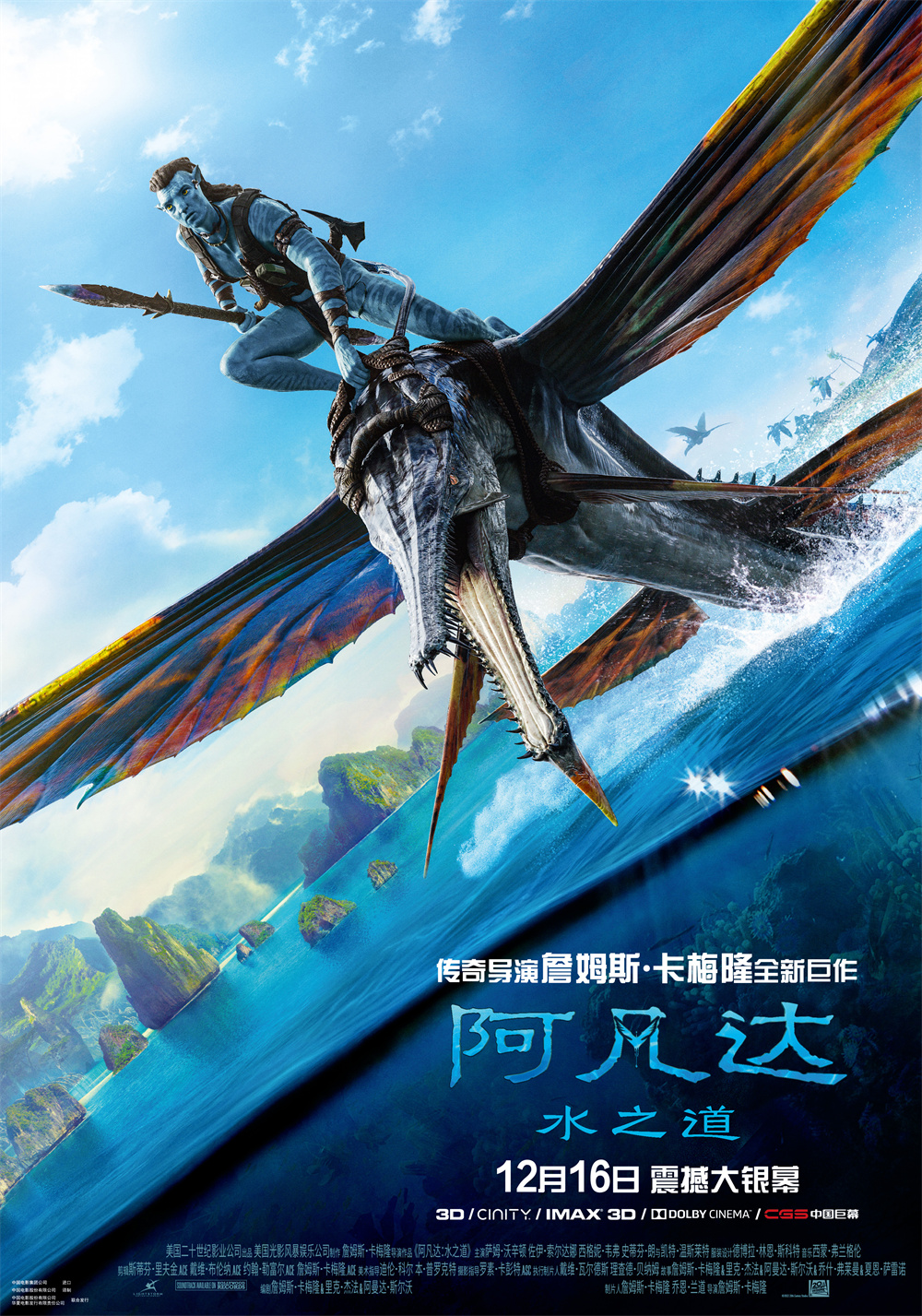
"Avatar: Way of Water" poster
Each screening system has advantages and disadvantages
There are five screening formats for "Avatar: The Way of Water" in China this time, including China Giant Screen, CINITY, Dolby Vision, Digital IMAX3D, and Digital 3D. For cinemas of different formats, the difference in ticket prices can reach two to three hundred yuan. Among them, the tickets for the laser IMAX theater and CINITY theater with super-large screens and 4K resolution are the most sought-after. This is because in "Avatar: The Way of Water", although the dialogue scenes are shot at ordinary 24 frames, many action scenes are completed with 48 frames that can better highlight the 3D stereoscopic effect, and only 4K resolution that supports 48 frames Only in the movie theater can you experience such a picture effect.
However, there is also a common problem in the projection of high-resolution movie theaters, that is, the gap between the 48-frame picture and the 24-frame picture transition, that is, when the action scene is transformed into a dialogue scene, sometimes there will be frame drops. On the other hand, since high-resolution movie theaters generally adopt a 48-frame projection mode, the presentation effect of 24-frame images (dialogue scenes) will have a high-definition TV sense of sight, resulting in the loss of movie sense.
In addition to laser IMAX theaters and CINITY theaters, the best-selling tickets are ordinary IMAX theaters with 2K resolution and Dolby Cinemas with a slightly smaller screen size but brighter pictures and unique sound effects. . These two types of theaters can only present 24 frames of pictures, so naturally there is no problem of frame drop.
The next step is the ordinary 3D movie theater with an affordable price. Undoubtedly, this type of theater still occupies the majority. The advantage is that apart from the price, the location of the theater, the number of screenings, and the choice of seating arrangements are more free and convenient; the disadvantage is that the presentation of visual effects and the immersion of watching movies are not as good as the first two.
As for which one to choose, you get what you pay for; but no matter how stunning the picture is, it is still just a movie after all. Therefore, everyone weighs their wallets and lives within their means.

Four stars Stephen Lang, Sam Worthington, Sigourney Weaver and Zoe Saldana (from left), and Weaver's return is a big surprise.
way of water, way of man
The reason why the ticket prices of different screening formats are so different is that "Avatar: The Way of Water" itself is a commercial blockbuster specially created for the big screen, focusing on visual effects.
The background of this sequel is still set on the planet Pandora, but the main scene has shifted from the Omatikaya tribe in the mountains to the Mekaina tribe inhabited by the archipelago. All take place above or below the sea, as the title suggests.
In the making of "Avatar: Way of Water", producer Jon Landau said: "In the film, Pandora is also a character. We have always used Pandora as a metaphor for the earth. In our world, no matter you No matter how rich the history of travel, we may not have seen all the wonders on Earth. So, James decided to continue telling stories on Pandora, exploring new biomes and cultures. Out of our love for the ocean, we decided to first The story of this sequel will take place in a marine environment."
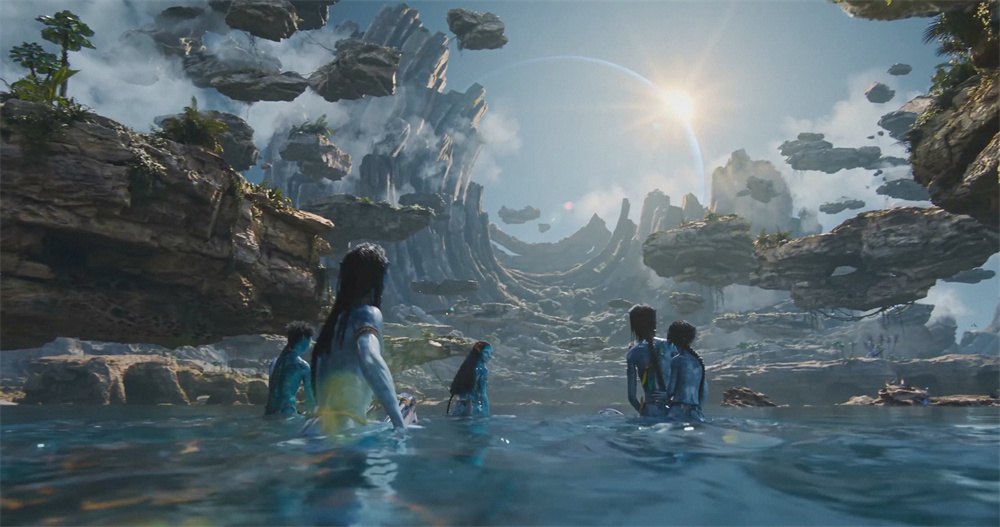
The Mekaina tribe living on oceanic islands and reefs
Some viewers who have watched it think that this sequel is not as amazing as the previous one. Personally, on the one hand, it may be related to the continuous broadening of the audience's horizons in the past thirteen years. On the other hand, it is also due to the similarity between the Mekaina tribe and the oceanic islands compared to the Omatikaya tribe and the mountain forests on the earth. The degree is higher, and it may be less refreshing.
However, the film's presentation of the clarity of the water is quite perfect. This may not be difficult to see in a documentary shot with a high-definition camera, but it is not so easy in a virtual feature film based on motion capture performances. The solution director Cameron came up with was to use two sets of equipment above and below the water to shoot at the same time, "so that the actors can swim naturally, come out of the water naturally, and enter the water naturally. Real effects come from real actions. Emotions are also real." .

Director Cameron on set
The cast's water scenes were filmed at Cameron and Jon Landau's production company, Lightstorm, at the Manhattan Beach studios. The team behind the scenes built a huge tank that contained enough water to replicate a real-world ocean environment. The tank is 120 feet (about 36.5 meters) long, 60 feet (about 18.2 meters) wide, and 30 feet (about 9.1 meters) deep, and can hold more than 250,000 gallons of water.
For motion capture technology to work underwater, the water must be clear and transparent. Cameron originally wanted the camera team to wear scuba diving suits to film the actors' performances, but found that the breathing devices would disturb the water. He said: "There can't be too many bubbles in the water. Each bubble is like a small shaking mirror, and the capture system needs to read the optical markers on the actor's body to achieve motion capture, but the system cannot distinguish markers from bubbles." .”
The only way to do that is, "Everyone who works in the tank has to hold their breath," Cameron said. "The people who are lighting underwater have to hold their breath. The people who shoot underwater have to hold their breath. The actors have to hold their breath, of course." The director also revealed that although all the members of the cast have demonstrated superb free diving skills, Kate Winslet, who has worked with him on "Titanic" before, is the most comfortable underwater. "Her static breath holding time is as high as 7 minutes and 20 seconds. I have been free diving for 50 years, and the longest time I can hold it should be 5 and a half minutes."
“In the end, we made one performance capture environment for underwater and another performance capture environment for above water. The two environments were up and down, with only an inch between them—so that the computer could read from both environments at the same time. It reads the data from the camera and puts it all together in real time. My virtual footage shows people coming and going, swimming into the frame, climbing out of the water and walking onto the pier or jumping in and swimming underwater.” Kame Ron said in the making of.

Actors complete a motion capture performance in a water tank
And the "virtual lens" he calls is also a revolutionary technology. It allows a director to shoot in a computer-generated world, exactly like a live-action shoot or a Hollywood set. Through the virtual lens, Cameron sees not Sam Worthington, Zoe Saldana, or Sigourney Weaver, but their tall blue counterparts in the world of Pandora. Cameron said: "I can see what everyone looks like in the character, whether it is in the water or underwater, and I can guide them through the diving intercom system. They make real-time show direction."
After the content shot through the virtual camera was edited, it was sent to Weta Digital Studios in New Zealand, founded by Peter Jackson. Joe Letteri, the senior visual effects director who checks the "Avatar" series, has won Oscars four times. The famous Gollum and King Kong are all CG characters he produced. This time he teamed up with Richard Burnham, the special effects artist of Light and Shadow Storm, not only to restore the performances of the actors, but also to add content that the actors could not express themselves, such as the subtle movements of the Na'vi people's tail and ears. "The reason why we like performance capture is to restore the integrity of the performance: body, emotion, expression, eyes, everything is there. The actor's current presentation is sacred." Cameron said.
Exotic Beasts are also an important role
In addition to characters, Weta Digital has to create the magical world of Pandora from scratch. Every plant, tree, and stone in it is generated and rendered on the computer of the special effects team; due to the ubiquitous water in the scene, the complexity of the lens is unprecedented, requiring major breakthroughs in lighting, coloring, and rendering technology. It took more than five years just to develop the software and methods needed to shoot this sequel.
Where there is water, there are naturally strange underwater creatures. In "Avatar: The Way of Water", Cameron spent a lot of space on an animal named Tukun. Compared with Icaran, the flying mount of the Riomatikaya tribe in the first film, the bond between Tukun and the Mekaina tribe is stronger, and they also promote the development of the plot in the sequel.
If we use the creatures on the earth as a reference, Tukun, which is more than 90 meters long, can be said to be a fusion of the body shape of a whale and the spirituality of a dolphin. In Cameron's conception, "Tukun and Na'vi people's cultures are connected through music, singing and dance. The Mekaina people will tattoo Tukun to express their family stories. Adult Tukun After the ceremony, there will be tattoos on the body and fins, the same as the Mekaina teen's first tattoo."
The role of this highly intelligent creature in the film is by no means to be cute or to act as an eye-catching vase. In fact, a young tukun named Payakan is an important character in the film. Its fierce battle with the humans who hurt it and the final Jedi counterattack are one of the most thrilling and touching bridges in the whole film.
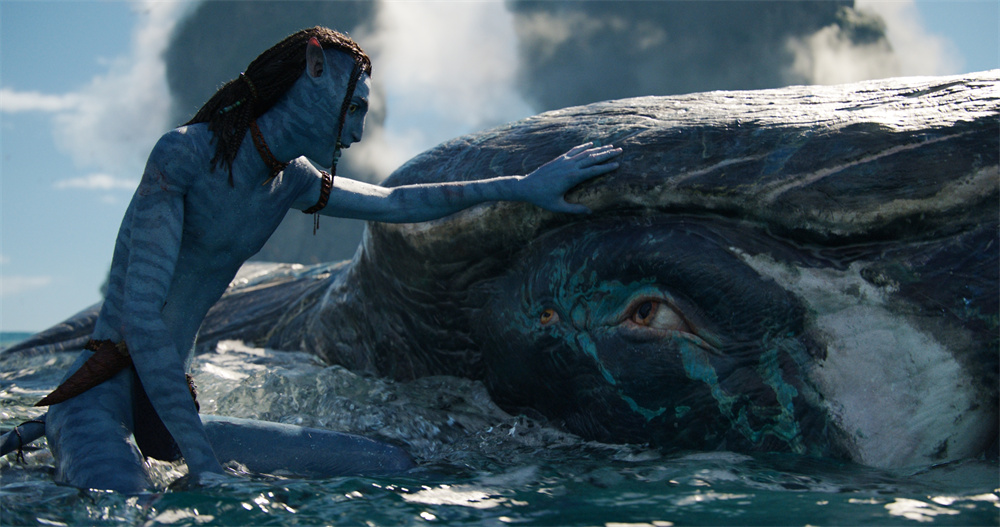
Loak and Tukun Payakan
Fun sea creatures, including Illu, the kids' ride. In Cameron's words, it was "a two-winged version of a manta ray on the long neck of a plesiosaur, with front wings like Euro-style jet fighters." In the view of art director Dylan Cole, Iru echoes Icaran in "Avatar", "We want it to have a character like a dolphin or a seal, which is very cute and aggressive at the same time. threatening."
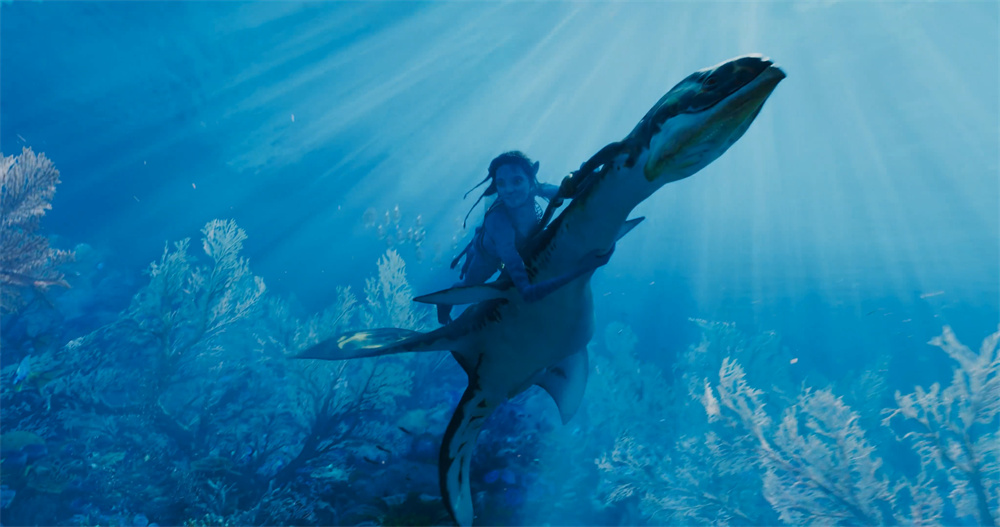
Iru, the children's mount
And Jack Sully's mount is the amphibian skimmer pterosaur. Skimmers had gills for underwater breathing as well as surface breathing. Cameron said: "The pterosaur is a warrior's mount, more aggressive, more dangerous, faster." Its design was partly inspired by flying fish, but the head shape of the pterosaur is significantly different, and it also brings It has bright Pandora-style wings, and a simple black and orange pattern with occasional hints of white. In Cole’s view, “Design is not just about looking good, it’s about being functional, like a real creature.”

Jack Sully riding a wave skimmer
Three hours, no pee
Although "Avatar: The Way of Water" has a variety of screening formats, no matter what kind, it still presents the same characters and plots. Cameron also said frankly in the production tidbits: "Compared with the previous one, the technology we are using now has made great progress. Does this guarantee that the audience will see a better film? Of course not necessarily. The majority of audiences only I care about the plot, the characters, and how the film makes them feel. I keep that in my heart every day.” So, if you’re not afraid of a little spoiler, you might as well first understand what the story of this sequel tells.
In the first "Avatar", the paraplegic former navy soldier Jack Sully (played by Sam Worthington) permanently transformed into an Avatar with Earthman genes and Na'vi genes, and fought with the Omatikaya tribe Neytiri (Zoe Saldana), the daughter of the patriarch of the family, married. The story of "Avatar: Way of Water" begins more than ten years later, Jack has fully adapted to his new body and the identity of the patriarch, and has three children with Neytiri, and adopted Grace (Sigourney) Weaver), the daughter Qili left behind.
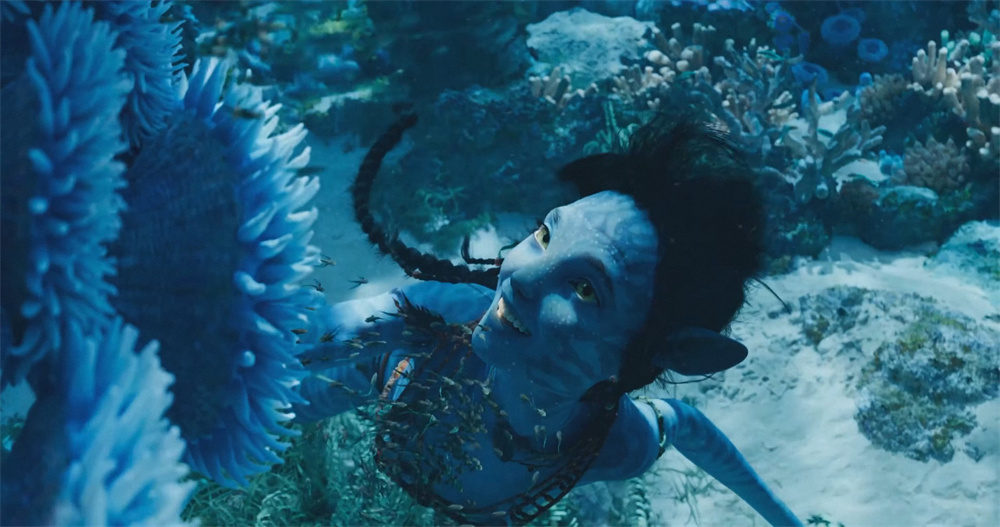
Grace's daughter Kiri, adopted by Jack and Neytiri
Among the four children, the eldest, Netya, is the most sensible and obedient, and is good at taking care of her younger siblings; the second, Qili, is a little sensitive because she doesn't know who her father is; The youngest sister Took is always clinging to her brothers and sisters. The four of them are good friends who are inseparable from the orphan "spider" left by humans.
It turned out that after the "Skyman" was driven away, Jack's family lived an idyllic life with their clansmen. However, Colonel Miles Quaritch (Stephen Lang), who died in the previous film, returns as an avatar, bent on revenge for Jack and Neytiri. For the safety of the people and to protect the children, Jack decided to take his family to leave for the hard-to-find ocean led by Ronal (Kate Winslet) and Tenova (Cliff Curtis). Tribe, start a new life. Just as the family finally adapted to the new home built of water after going through a lot of adjustments, a new crisis is slowly approaching...

Colonel Miles Quaritch in Avatar
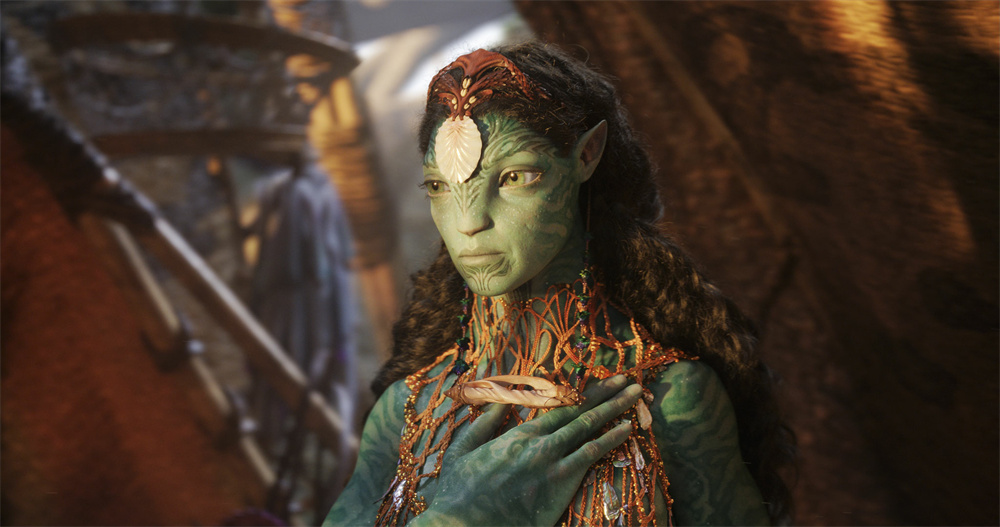
Kate Winslet as Ronal, High Priest of the Mecaina Tribe
Perhaps in the eyes of some people, for such a blockbuster special effects film, the plot and character design are not so important. I don't agree with this point of view. If the story is poor, no matter how good the special effects are, no matter how cool the pictures are, it will not be able to make people watch the show. What's more, the length of the film is more than three hours, so if it is not on pins and needles, it is also tasteless. Personally, special effects should still serve the plot. Only when the two complement each other can the audience be brought into another world.

The Mekaina tribe prepares for a showdown with the Skymen
The decoupling of role identity setting and behavior logic and the lack of smooth transition of the plot are also the reasons why I have reservations about the first "Avatar". Fortunately, as far as the plot itself is concerned, this sequel is much richer than the first one. According to the role, it can be roughly divided into three clues: Jack Sully, Miles Quaritch and the children. Among them, the third one accounts for the most, and it can be subdivided into two clues: Roark's growth and Qi Li's awakening-obviously, this is director Cameron's paving the way for the next three sequels. There are five volumes in the Avatar series.
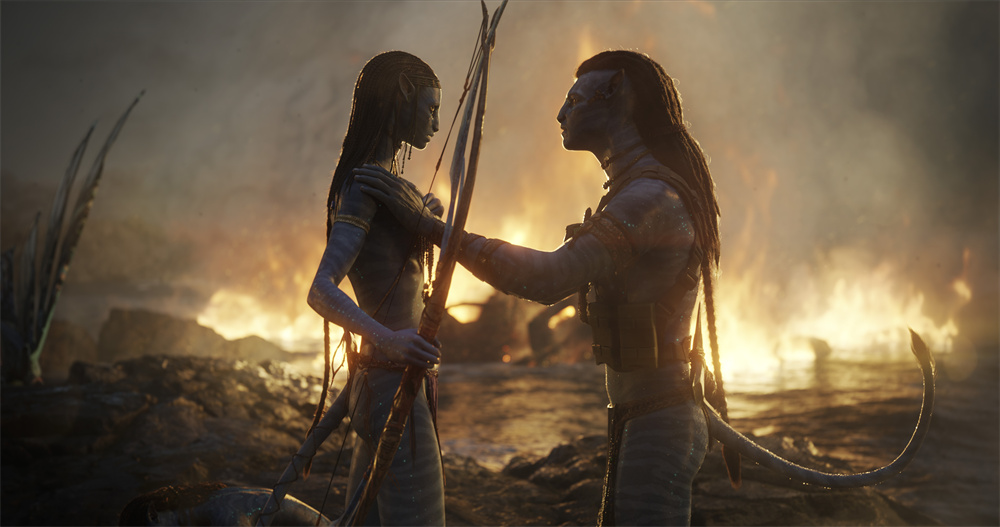
Neytiri and Jack fighting for their family
It is worth mentioning that the plot of the whole film is quite compact, and there is no so-called urine point in more than three hours, so before entering the theater, you still have to make preparations. In addition, audiences with delicate emotions, please prepare tissues to prevent the 3D glasses from being stained with tears. Jack Sally said: "Home is our greatest weakness and our thickest armor." I believe many people will resonate.

Jack Sully puts everything on the line to protect his family
If you want to talk about the plot and characters that can be criticized, in my personal opinion, firstly, the villain's behavior motives are too simple, and secondly, the "I am your father" stalk is too old.
The performance capture work of "Avatar: Way of Water" started in September 2017 and lasted for nearly 18 months. During the period, Director Cameron and all the cast members completed all performance capture and shooting of the four sequels. Previously, Cameron said in an interview that the box office revenue of "Avatar: The Way of Water" must reach the third or fourth highest in history (about 2 billion U.S. dollars) in order to ensure that at least it will not lose money; and if The box office of "Avatar: Way of Water" was not satisfactory, and he considered that he might abandon the next few films he had already conceived. In other words, if the box office of "Avatar: The Way of Water" is ideal enough, then "Avatar 3" scheduled for 2024, "Avatar 4" scheduled for 2025, and "Avatar 5" scheduled for 2027 may be true. Can be released on schedule.


